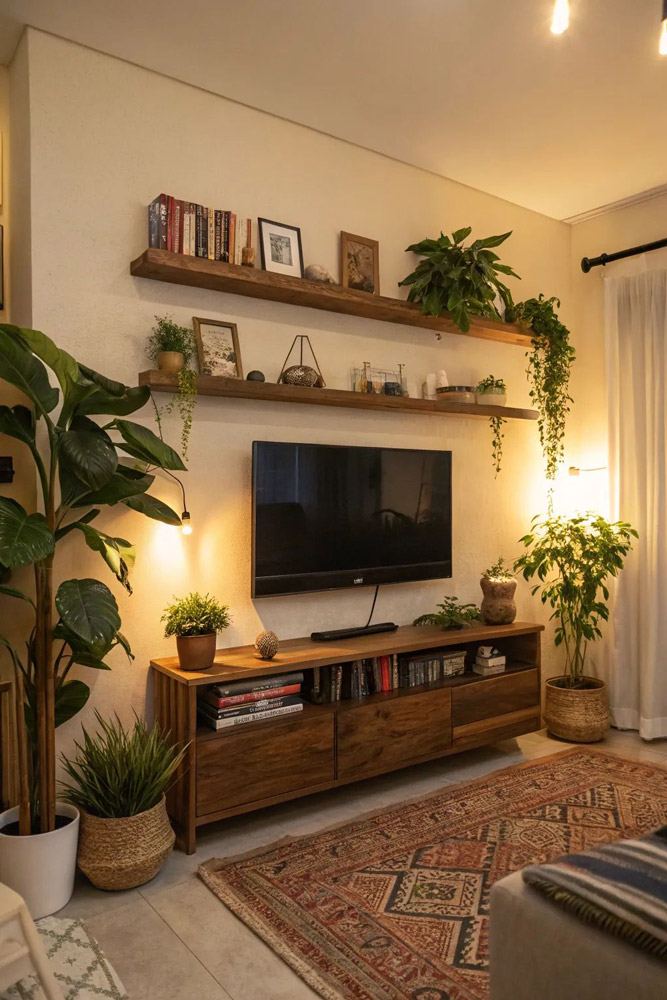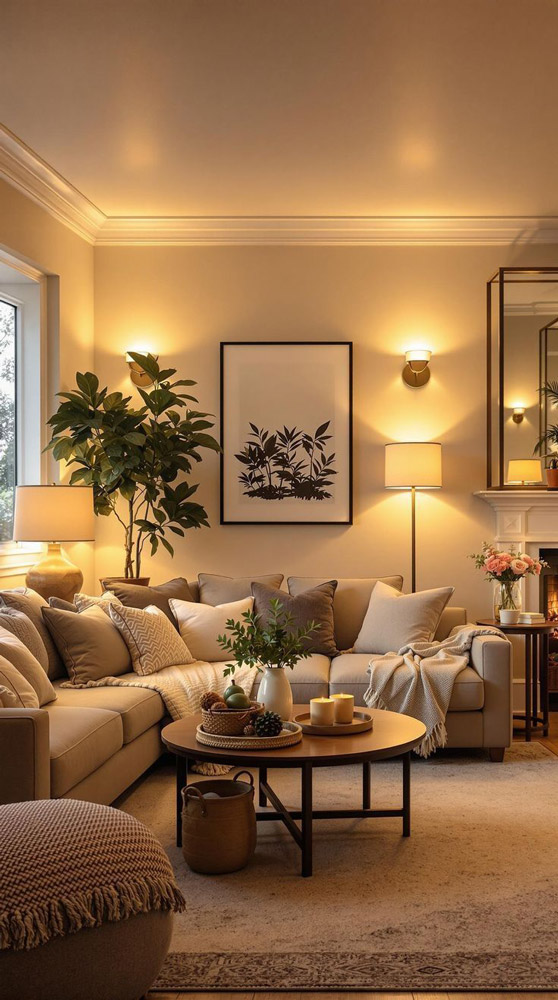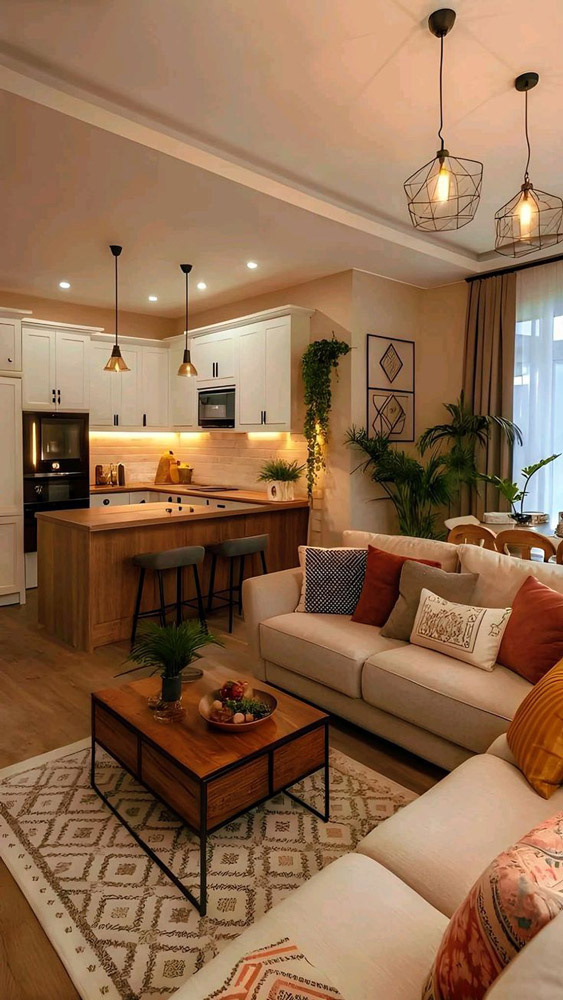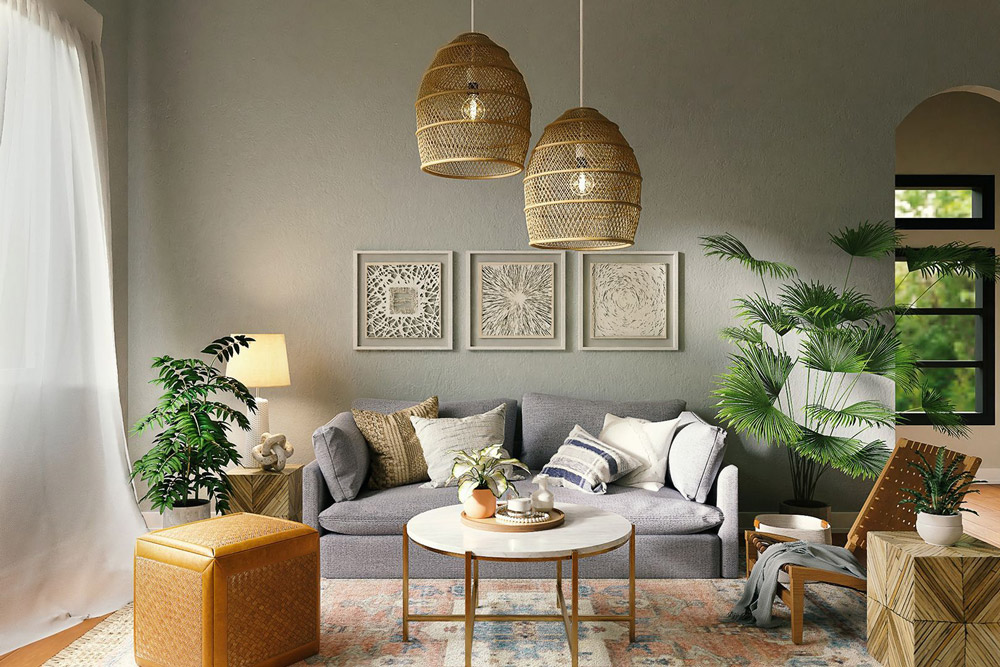Home decor items are the building blocks of interior style and personality. While architecture and furniture set the foundation of a living space, home decor adds warmth, character, and identity. These items, both functional and aesthetic, shape the atmosphere of a room and reflect the taste of the people who live there.
In this article, we’ll explore what qualifies as home decor, break down different categories of decor items, provide guidance on how to select them, and explain why they matter in shaping your living environment.
Contents
What Does “Home Décor” Actually Mean?
The term “home decor” refers to the assortment of items used to enhance the visual appeal and comfort of a living space. These items are typically non-structural and non-permanent, meaning they can be moved or swapped out easily without remodeling the home.
There’s often confusion between interior design and home decor. Interior design involves planning the layout, structure, and functionality of a space. Home decor, on the other hand, focuses on the styling and arrangement of objects within that space. In simpler terms, interior design is the blueprint; home decor is the finishing touch.
A good rule of thumb: if you could turn your room upside down and the item would fall out, it’s likely considered decor.
Categories of Home Décor Items
Home decor spans a wide range of items that cater to different purposes and styles. Below are the major categories.

Decorative Accessories
Decorative accessories include a variety of visually striking and artistic elements that don’t serve a major functional purpose but significantly enhance a room’s aesthetics. Examples include:
- Wall art such as paintings, prints, and photographs
- Sculptures and figurines
- Decorative mirrors
- Clocks and timepieces
- Candles and candle holders
These elements help create focal points, draw attention to specific areas, and introduce color, texture, and form.
Textiles and Soft Furnishings
Textiles add warmth, comfort, and softness to a room. They are also among the easiest and most cost-effective ways to change the look and feel of a space. Common textile-based decor items include:
- Throw pillows and cushions
- Blankets and throws
- Area rugs and runners
- Curtains, drapes, and valances
- Tablecloths and fabric placemats
Mixing materials like cotton, linen, wool, or velvet allows homeowners to layer textures for a richer, more dynamic look.
Lighting Fixtures
Lighting serves both a practical and decorative function. The right lighting can enhance mood, draw attention to key elements, and even make rooms appear larger. Key decor lighting pieces include:
- Table lamps and floor lamps
- Pendant lights and chandeliers
- Wall sconces
- LED strip lights for ambient or accent lighting
Choosing lighting fixtures with unique designs or materials—such as brass, glass, or rattan—can add personality and elegance to a room.

Plants and Greenery
Bringing nature indoors with live or artificial plants is a timeless home decor strategy. Plants help purify air, soften architectural lines, and add a calming, organic touch. Decor options in this category include:
- Potted houseplants
- Hanging planters
- Dried floral arrangements
- Artificial trees or succulents
- Unique ceramic or terracotta planters
Even a single well-placed plant can add vitality and warmth to an otherwise sterile room.
Functional Yet Stylish Accents
These items provide utility while also serving as design features. Functional decor items include:
- Storage baskets and decorative boxes
- Serving trays and catch-all dishes
- Stylish bookends
- Coat racks or hooks
- Magazine holders
Combining utility and beauty, these pieces are essential for maintaining a space that is both organized and aesthetically appealing.
How to Choose the Right Décor Items
Selecting home decor requires a balance of function, form, and personal style. Here are key considerations:
Style alignment: Ensure the decor complements your interior design style. Whether your space leans minimalist, rustic, industrial, or bohemian, your decor should reinforce that theme.
Color coordination: Use a consistent color palette to create harmony. Accent colors in decor should contrast or complement the dominant hues of your walls, floors, and furniture.
Proportion and scale: Decor should be sized appropriately for the space. Oversized items can overwhelm a small room, while too many small objects may feel cluttered.
Material and texture: Vary materials to add depth. Combine soft textures (like velvet or cotton) with hard ones (like metal or glass) for visual interest.
Budget: Not all decor has to be expensive. Mix investment pieces with affordable finds or DIY decor to achieve a personalized yet practical setup.

The Role of Home Décor in Interior Aesthetics
Home decor is more than just “stuff” — it’s a visual language that communicates who you are. Well-chosen decor items can make a room feel cozy, sophisticated, eclectic, or serene. They introduce rhythm and repetition, highlight architectural features, and guide the eye throughout a space.
In minimalist interiors, decor helps soften the starkness. In maximalist ones, it offers opportunities for layered storytelling and self-expression.
A well-decorated room also creates a better emotional connection. It becomes a sanctuary where occupants feel comfortable, inspired, and grounded.
Seasonal and Trend-Based Home Décor
One of the advantages of home decor is its flexibility. Items can be rotated seasonally or updated based on current trends without major investment. For example:
- Spring: Light-colored throws, fresh flowers, pastel-toned cushions
- Fall: Earth-toned table settings, dried floral wreaths, candles
- Holidays: String lights, themed centerpieces, festive ornaments
Trend-based decor can include color-of-the-year themes, sustainable materials, or retro design revivals. However, incorporating trends should be done sparingly to avoid fast-dating your interior.
Sustainable and Ethical Décor Choices
As consumers grow more environmentally conscious, sustainability has become a key factor in home decorating. Some ways to decorate more ethically include:
- Choosing natural materials like bamboo, wool, or reclaimed wood
- Supporting local artisans and handmade goods
- Purchasing second-hand or vintage items
- Investing in high-quality pieces that last longer
Decor choices have both aesthetic and environmental impact, making sustainability a responsible and rewarding direction.
Common Mistakes to Avoid in Home Decoration
Decorating mistakes can lead to a space that feels off-balanced, overcrowded, or impersonal. Here are common pitfalls:
- Over-accessorizing: Too many items can feel cluttered or chaotic.
- Ignoring proportion: Large furniture with tiny decor pieces can feel mismatched.
- Neglecting cohesion: Mismatched styles, colors, or textures can create visual confusion.
- Following every trend: Trend-hopping often leads to decor that lacks lasting value or identity.
- Skipping personalization: Spaces that only follow magazine templates may feel soulless.
Conclusion
Home decor items are an essential part of creating a meaningful, stylish, and comfortable living space. From artwork and lighting to textiles and plants, these elements offer endless possibilities for personalization. Whether you’re redecorating an entire home or just refreshing a corner, understanding and curating the right decor makes all the difference.
With thoughtful selection and an eye for style, decor transforms houses into homes.

